The Goodeniaceae is a predominantly Australian family and is characterised by a specialised cup-like structure at the apex of the style known as an indusium, which collects pollen as it pushes past the stamens in bud and functions as a pollen-presenter. The corolla has five lobes, each typically with wing-like extensions that are infolded in bud, and the lobes are arranged in various configurations to produce two-lipped, fan-shaped or other flower types.
 A recently published paper by Kelly Shepherd of the WA Herbarium in conjunction with five other researchers will result in name changes for eight of the 86 species currently listed in the SA Plant Census for the family Goodeniaceae. The paper (downloadable here) is the culmination of a series of collaborative studies investigating relationships within the Goodeniaceae using next-generation sequencing across nuclear, chloroplast and mitochondrial DNA.
A recently published paper by Kelly Shepherd of the WA Herbarium in conjunction with five other researchers will result in name changes for eight of the 86 species currently listed in the SA Plant Census for the family Goodeniaceae. The paper (downloadable here) is the culmination of a series of collaborative studies investigating relationships within the Goodeniaceae using next-generation sequencing across nuclear, chloroplast and mitochondrial DNA.
Analysis of the molecular data grouped some other genera and species of Goodeniaceae within the largest genus, Goodenia. Maintaining monophyly requires either that Goodenia be divided and new genera erected, or else its definition be expanded to incorporate those new elements. The authors made the pragmatic taxonomic decision to adopt an expanded Goodenia, which minimises the number of new names. For South Australia this means that Velleia (6 species), Selliera (1 species) and Scaevola collaris will be transferred to Goodenia, and those existing names placed in synonymy.
As amended, Goodenia now contains 230 species (54 in SA) and can be defined by various combinations of characters, although not by the development of any obvious advanced character held in common. Shepherd et al. (2020) also revised the infra-generic classification of Goodenia to better reflect its internal phylogeny, recognising three subgenera and 10 sections.
South Australian representatives for some of these groupings are illustrated below and provide a glimpse of the great floristic diversity in this genus.
Subgenus Goodenia, section Goodenia
Goodenia ovata, is the ‘type species’ of the genus Goodenia and shows the yellow two-lipped flower type found in most of the SA species.

Goodenia ovata, Kuitpo, SL. Photo: L. Jansen.
Goodenia radicans (formerly Selliera radicans). This is the most widely distributed of the Goodenia species and is found in Australia, New Zealand and Chile. Its extra-Australian occurrences presumably result from long-distance dispersal and are not surprising given that it has sticky, fleshy fruits and occurs in swampy habitats frequented by migratory birds. The fan-shaped flowers resemble those found in Scaevola.

Goodenia radicans, Piccaninnie Ponds, SE (Photo: R.K. Sandercock); L. Jansen 1544, Salt Creek, SE (Photo: A.L. Carle).
Goodenia collaris (formerly Scaevola collaris) is closely related to the above; it also has fan-shaped flowers and specialised fruits, which in this case are woody. It is associated with gypseous soils and with clays adjoining temporarily inundated areas.
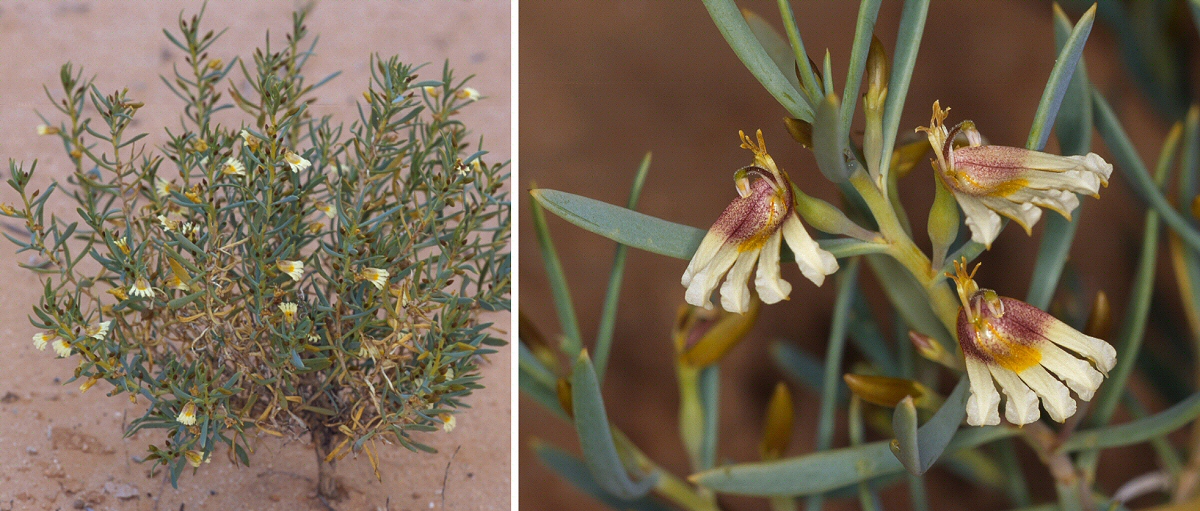
Goodenia collaris, BS94-10, Lake Tamblyn shore, Simpson Desert. Photo: P.D. Canty.
Goodenia saccata is endemic to northern Flinders Ranges and has strongly scented white flowers similar to those in G. albiflora but differs in a number of characters including its more shrubby habit.

Goodenia saccata, PJL 2875, Gammon Ranges, FR. Photo: P.J. Lang.
Subgenus Goodenia, section Rosulatae
Like many of the species in this section, Goodenia glabra often grows as a simple rosette-leaved herb, but sometimes it can develop a more bushy habit as in this example. It occurs on both rocky and sandy habitats and in SA extends from the Gawler Ranges to the far north-west of the State.
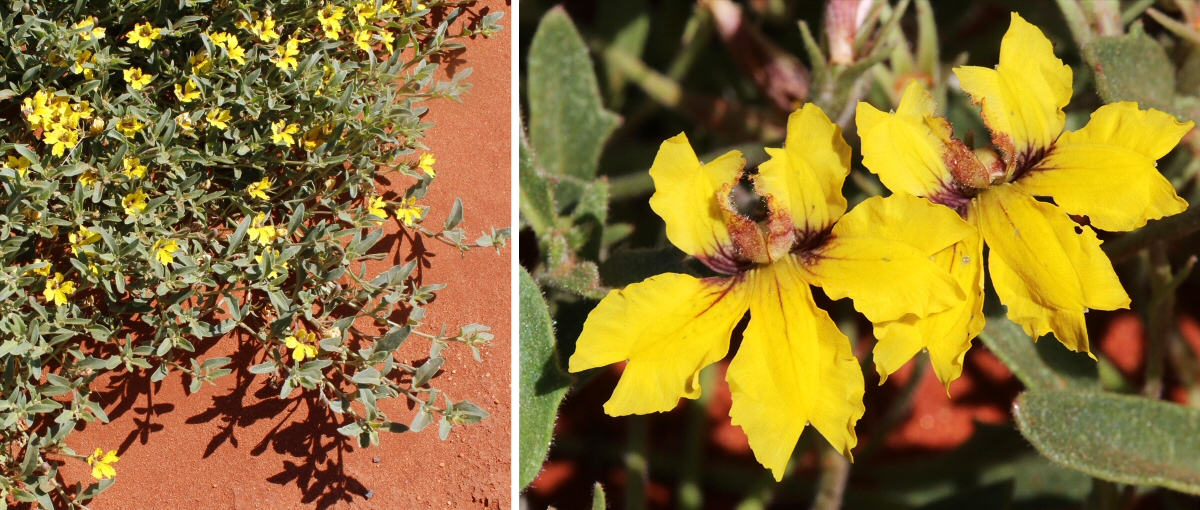
Goodenia glabra, PJL 2923, W of Indulkana, APY Lands, NW> Photo: P.J. Lang.
Subgenus Monochila, section Velleia
The former genus Velleia now resides in its own section of Goodenia. Its species differ from most others of the genus in having the ovary to a large degree superior.

Goodenia arguta, M.J. Thorpe 227, S of Gawler Ranges. Photo: SA Seed Conservation Centre.
Goodenia arguta is widespread on loamy soils in mallee and dryer woodland areas of the State. Goodenia connata, with its distinctive perfoliate leaves, occurs on sandy soils. It is most common in northern parts of the EP and MU regions and often appears after fire or other disturbances.

Goodenia connata, BS1137-199, Great Victoria Desert, NW (Photo: R. Butcher); Murray Mallee, MU (Photo: SA Seed Conservation Centre).
Shepherd published a new name, Goodenia capillosa, for the species formerly known as Velleia hispida, because the name “Goodenia hispida” had already been applied to a different Goodenia species. The main distribution of G. capillosa is in Western Australia, but there are small outlying occurrences in SA at Mt Finke (GT) and in the Indulkana Range (NW).

Goodenia capillosa, Mt Finke, GT. Photo: SA Seed Conservation Centre.
Subgenus Monochila, section Scaevolina
Goodenia ramelii. This striking species is found on rocky substrates in the ranges of central Australia. In SA it is restricted to the northern part of the NW region.

Goodenia ramelii, PJL 2950, near Kalka, APY Lands, NW. Photo: P.J. Lang.
Subgenus Porphyranthus, section Ebracteolatae
Most species in this large section lack bracteoles on their flower stalks. Goodenia heterochila is distinguished by the highly modified upper corolla lobes, and the epithet is derived from the Greek heteros (different, other) and chilos (lip). In SA it is confined to the NW region.

Goodenia heterochila, PJL 3005, ENE of Victory Well, APY Lands, NW. Photo: P.J. Lang.
Subgenus Porphyranthus, section Porphyranthus
Species of this section have small flowers and seeds and are differentiated by their numerous ovules being scattered over the surface of the placenta rather than arranged in two rows. In SA, Goodenia modesta is mainly found on low-lying flats and drainage areas of the NW and LE regions.
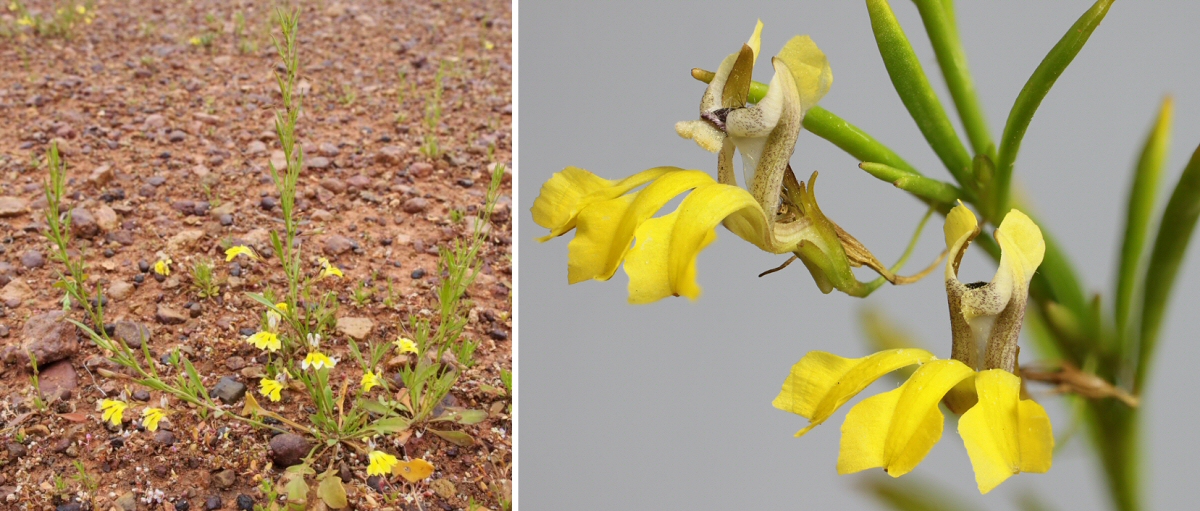
Goodenia modesta, Mt Willoughby, LE (Photo: SA Seed Conservation Centre); D.J.Duval 2216, Ingomar Station, LE (Photo: P.J. Lang).
Contributed by State Herbarium botanist Peter Lang.

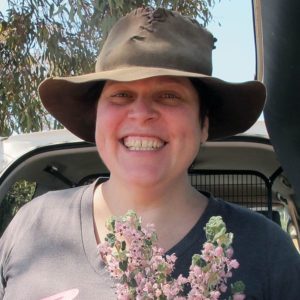
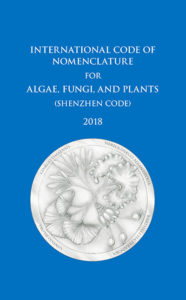















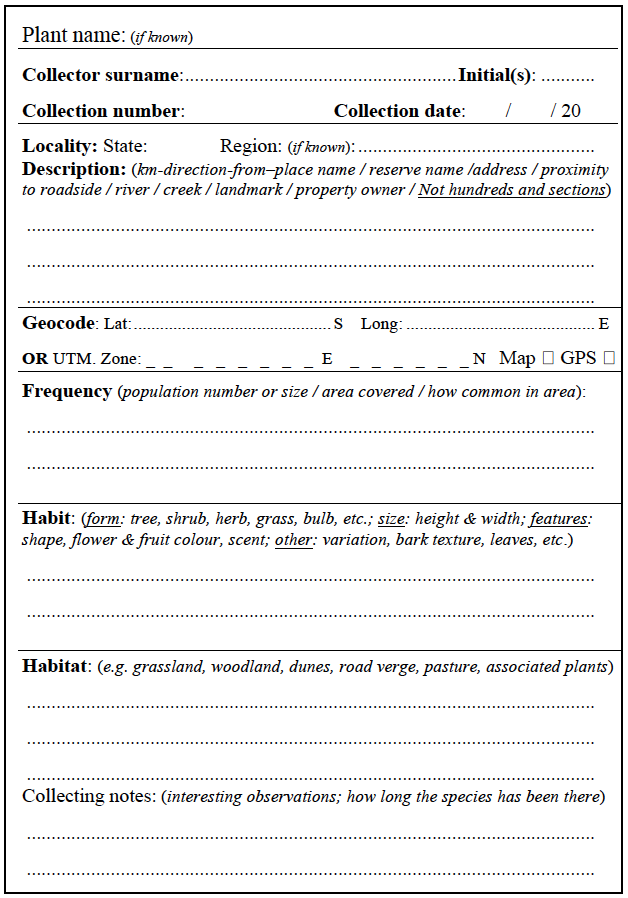
You must be logged in to post a comment.